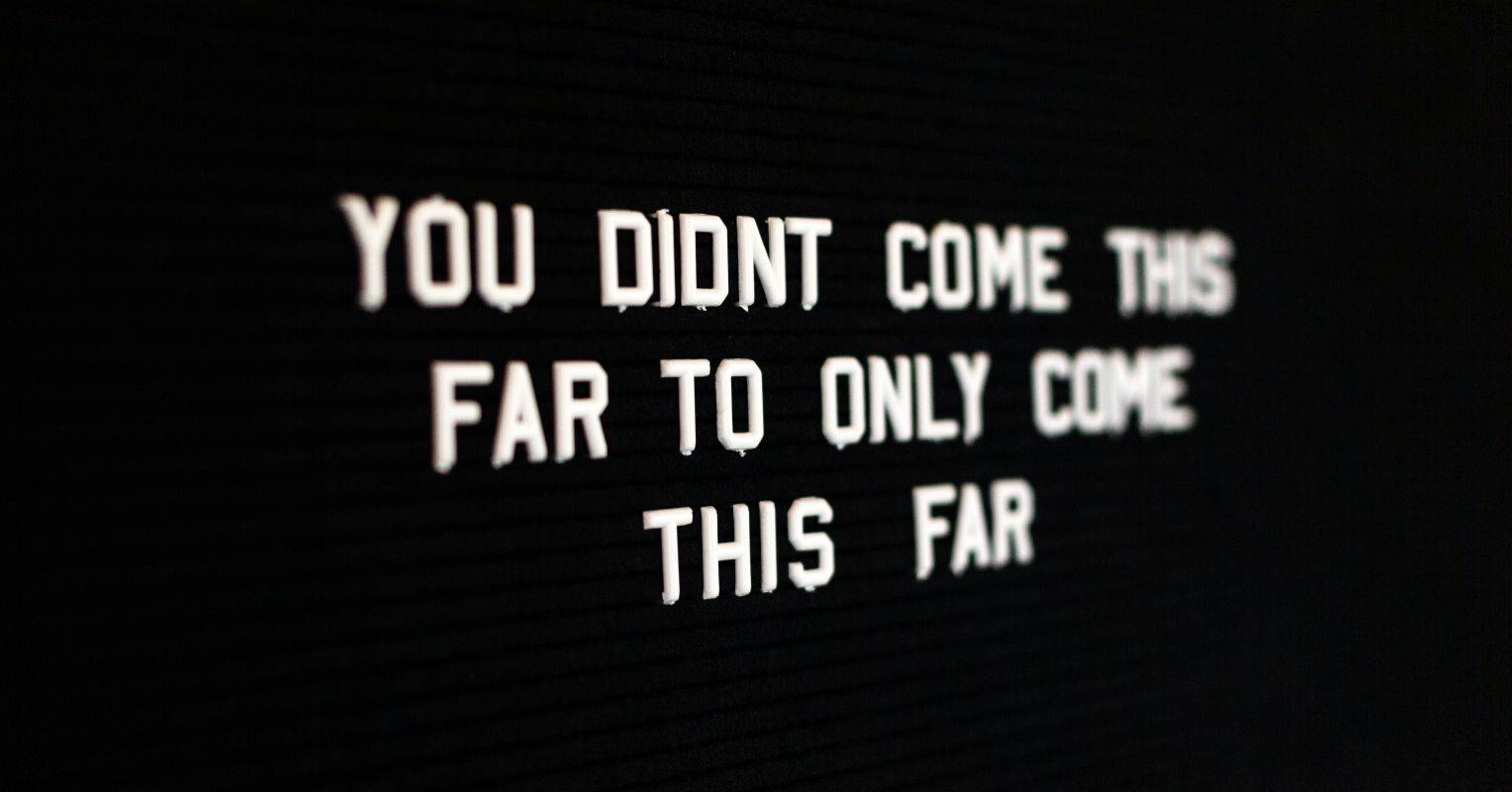Have you ever set a goal for yourself, only to find it difficult to achieve? You are not alone.
Many people struggle with reaching their goals, whether it’s losing weight, learning a new skill or making more money. Fortunately, there is a technique that can help you overcome these challenges and achieve your goals with ease – habit stacking.
Definition of Habit Stacking
Habit stacking is the practice of taking small habits or routines and combining them into a larger routine. Instead of trying to change everything at once, habit stacking allows you to make small changes that can add up over time. For instance, instead of trying to start an exercise routine from scratch, you could start by doing something as simple as stretching for five minutes every morning.
Importance of Habit Stacking in Achieving Goals
One of the main reasons why habit stacking is so effective is because it helps break down complex or overwhelming goals into smaller, more manageable steps. This can make it easier for individuals to build momentum and gain confidence in their ability to achieve their goals. Moreover, habit stacking eliminates the need for motivation or willpower.
Rather than relying on sheer force of will to make changes, individuals who use habit stacking rely on automaticity and repetition. Over time these small habits become ingrained in one’s daily routine and require little effort or thought.
Benefits of Habit Stacking
Habit stacking has many benefits beyond simplifying your path towards achieving a goal. It can also help improve one’s overall personal development by instilling discipline and consistency.
In addition, according to research conducted by Duke University’s Behavioral Economics Lab (BEL), people who habit stack are more likely to stick with their new habits over time compared to those who try to develop a new habit in isolation. Another benefit is the flexibility that habit stacking provides.
As an individual begins to build a new routine, they can modify it to better suit their unique needs and goals. In this way, habit stacking can be adapted to any individual and any goal.
Habit stacking allows us to break down complex goals into manageable steps while providing numerous benefits including instilling discipline, consistency and flexibility. In the following sections we will take an in-depth look at how you can effectively utilize this productivity technique to achieve your goals.
Understanding Habit Stacking
What is a Habit?
A habit is a behavior that is repeated regularly and tends to occur subconsciously. Habits can be either good or bad, and they are formed through a process called habituation.
When you repeat a behavior over and over again, your brain recognizes it as a pattern and begins to automate the process. This means that habits require less mental effort to perform than other behaviors do.
Habits are powerful tools for achieving goals because they allow you to make progress without having to think about every step along the way. Instead, once you have established strong habits related to your goals, those behaviors become automatic, freeing up your brainpower for other tasks.
How to Stack Habits?
Habit stacking involves taking advantage of this natural tendency of our brains by combining multiple habits into one routine. The idea is simple: if you already have an established habit that you do every day, adding another behavior onto the end of that existing habit can help cement the new behavior into your routine more easily.
For example, let’s say you want to start meditating daily as part of your morning routine.
If you already brush your teeth every morning without fail, then adding five minutes of meditation onto the end of that task will help train your brain to associate meditation with brushing teeth. Over time, this makes it easier for you to stick with the new habit even when willpower is low.
Types of Habits That Can Be Stacked
The types of habits that can be stacked together are virtually limitless since any combination of behaviors can potentially become an established pattern in our brains. Here are some common types of habits that people stack together:
– Physical exercise and drink water
– Reading and stretching
– Listening to audiobooks and doing housework
– Meditation and deep breathing exercises
– Journaling and drinking tea
The key is to choose habits that are related in some way, so they feel like a natural fit when stacked together. Over time, these small changes can lead to significant improvements in your life without requiring a lot of extra effort on your part.
Steps to Creating Habit Stacks
Identify the goal you want to achieve
Before you start creating your habit stack, it’s important to be clear about the goal you want to achieve. Having a specific and measurable goal will help you identify the habits that are necessary to achieve it.
For example, if your goal is to become more productive, then the habits that you need to develop may include waking up early, exercising daily, and focusing on one task at a time.
List the habits you need to develop to achieve the goal
Once you have identified your main goal, make a list of all the habits that are necessary for achieving that goal. Remember that good habits can positively impact multiple areas of your life. For example, exercising daily not only helps in achieving fitness goals but also helps in improving mental health and productivity.
When creating this list of habits, think about what changes can be made in your daily routine which will bring positive results over time. Start by making small changes first as they are easier to implement and maintain long-term.
Arrange the habits in a logical order for maximum effectiveness
After identifying all necessary habits, arrange them in an order that makes sense for maximum effectiveness. Consider factors like timing and dependencies between each habit when arranging them in order.
For example, if one of your daily goals is meditation followed by exercise then it makes sense for meditation should come first so that exercise can take place after physical and mental calmness has been achieved from meditation.
Additionally, when arranging habit stacks consider other factors like location or resources needed for each habit as well as any scheduling conflicts which may arise during implementation.
By following these three simple steps- identifying goals clearly, listing out necessary habits and arranging them logically- anyone with commitment can create an effective habit stack leading them towards their desired outcome.
Examples of Habit Stacks
Morning Routine Habit Stack: Starting Your Day the Right Way
A morning routine is a set of habits that you follow every morning to kickstart your day. It can include activities such as meditation, exercise, personal hygiene, or breakfast. Creating a habit stack for your morning routine can help you start the day with intention and focus.
Here’s an example of a possible habit stack for your morning routine:
1. Wake up at 6 am
2. Drink a glass of water 3. Meditate for 10 minutes
4. Do some light stretching or yoga for 20 minutes
5. Take a shower and get dressed
6. Have breakfast while reading something inspiring or informative By stacking these habits together, you can turn them into a powerful tool that sets the tone for the rest of your day.
Exercise Habit Stack: Building Physical Fitness One Step at a Time
Exercise is one of the most important habits when it comes to physical health and wellbeing. However, it can be difficult to make it part of your daily routine if you don’t enjoy it or find it challenging to find time for it. Creating an exercise habit stack can help you build momentum and make exercise more enjoyable by combining it with other habits that you already enjoy or need to do anyway.
Here’s an example of an exercise habit stack:
1. Drink a glass of water upon waking up
2. Change into workout clothes
3. Go for a walk around the block (10-15 minutes)
4. Do 10-15 minutes of bodyweight exercises (push-ups, squats, lunges)
5. Stretch or do yoga for 10-15 minutes
6. Take another walk around the block (10-15 minutes) By starting with small steps and gradually increasing intensity over time, you can create a sustainable exercise routine that becomes a natural part of your daily schedule.
Reading Habit Stack: Feeding Your Mind with Daily Knowledge
Reading is a habit that can broaden your mind, expand your knowledge on various topics, and improve your cognitive skills. However, it can be challenging to find the time and motivation to do it consistently. Creating a reading habit stack can help you make reading a regular part of your day and turn it into an enjoyable and rewarding activity.
Here’s an example of a reading habit stack:
1. Read for 10-15 minutes before going to bed
2. Read while having breakfast (10-15 minutes)
3. Listen to an audiobook or podcast while commuting or doing household chores
4. Take notes or highlight important passages for later review By incorporating reading into other activities that you already do every day, you’re more likely to stick with this valuable habit and reap the benefits over time.
Advanced Techniques for Habit Stacking
Combining Habits with Triggers for Better Results
One of the most effective techniques for habit stacking is to combine habits with triggers. A trigger can be anything that prompts you to carry out a habit.
For example, if your goal is to read more books, you can stack this habit with the trigger of drinking a cup of coffee each morning. This way, every time you drink your coffee, it triggers the habit of reading a book.
The key is to choose a trigger that naturally occurs in your daily routine so that it becomes effortless to stick to the new habit. Another way to combine habits with triggers is by using location-based cues.
If you want to start meditating regularly, you can set up your meditation cushion in a specific corner of your room and create an association between that spot and meditation practice. Eventually, just sitting on the cushion will become enough of a trigger for you to begin meditating without any additional effort.
Maintaining Consistency and Accountability through Tracking
Tracking your progress is essential when building new habits through stacking techniques. It helps maintain consistency and accountability by providing tangible evidence of progress over time. There are various ways you can track habits, including bullet journals and apps designed specifically for tracking habits.
Incorporating gamification into habit tracking methods can also boost motivation levels significantly. You could create point systems or reward yourself after achieving specific milestones or consistency streaks in sticking to your stacked habits.
Another useful strategy involves using technology such as smartwatches or fitness trackers that come equipped with built-in activity monitoring features such as step counting or calorie-tracking abilities. By consistently tracking these metrics over time, it becomes easier to monitor progress and adjust accordingly.
Maximizing Results Through Experimentation
Experimentation plays an integral role in habit stacking success because everyone’s preferences and circumstances differ. Maximizing results comes from trial and error, so be prepared to modify your routine accordingly until you find the perfect stack that works best for you. Being open to change and trying new things is key when it comes to experimentation.
For example, if you find yourself struggling with a particular habit within your stack, consider exchanging it for a different one or altering its position within your routine. You may find that making subtle changes can have a significant impact on the success of your habit stacking.
Building Resilience Through Mindset
While habit stacking can be an effective tool for achieving goals, building resilience through mindset is just as crucial. Learning how to cultivate a growth mindset by embracing challenges and viewing setbacks as opportunities for growth can help you stay motivated in the face of adversity.
Mindset plays a pivotal role in habit stacking success since it determines how willing we are to pivot our habits in moments where they’re not serving us well. Instead of giving up when things get tough, adopting a resilient mindset helps us recognize that setbacks are inevitable but recoverable.
Advanced techniques such as combining habits with triggers, maintaining consistency through tracking progress, maximizing results through experimentation, and building resilience through mindset all play critical roles in ensuring successful habit stacking outcomes.
Incorporating these strategies into our daily routines requires patience and persistence but ultimately leads to long-term positive change and personal growth.
Common Mistakes When Habit Stacking and How to Avoid Them
One of the most common mistakes people make when habit stacking is trying to take on too much at once. It’s important to remember that habits take time and effort to develop.
Trying too many new habits at once
Trying to add too many habits all at once can quickly become overwhelming, causing you to abandon the habit stack altogether. To avoid this mistake, start with just one or two new habits at a time.
Once these have become ingrained in your routine, you can begin adding more. This will not only help prevent overwhelm but also increase your chances of success in developing new habits.
Another helpful tip is to prioritize your goals and choose the habits that are most important for achieving them. This way, if you do have to cut back on some habits for any reason, you’ll still be working towards your primary objectives.
Not being specific enough about your goals
Another mistake people often make when habit stacking is not being specific enough about their goals. Setting vague or general goals can make it difficult to determine which habits will be most effective in achieving them.
For example, if your goal is simply “to be healthier,” it’s hard to know which specific behaviors will get you there. Instead, try setting a more specific goal like “to lose 10 pounds” or “to run a 5k.” With these targets in mind, it becomes easier to identify the exact habits necessary for success.
It’s also important to break down larger goals into smaller milestones. This makes progress more tangible and helps keep motivation high throughout the process.
The Impact of Poor Habits on Your Life
The Dangers of Procrastination
Procrastination is one of the most common bad habits that can derail progress toward any goal. Putting off tasks until the last minute can lead to missed deadlines, lost opportunities, and increased stress.
To combat procrastination, try setting strict deadlines for yourself and breaking larger tasks into smaller, more manageable ones. You can also try the “5-minute rule” which involves starting any task for just five minutes to overcome initial resistance.
The Harmful Effects of Overindulgence
Another common bad habit is overindulgence in unhealthy behaviors like drinking, smoking, or overeating. These habits can have serious negative impacts on your physical health and well-being.
To break these habits, it’s important to identify triggers that lead to indulging in them and find alternative ways to cope with stress or negative emotions. Seek support from friends or professionals if necessary.
The Power of Habit Stacking and its Impact on Your Life
Habit stacking is a powerful tool for achieving goals and making positive changes in your life. By building new habits on top of existing ones, you can create a system that supports long-term success. However, it’s important to avoid common mistakes like trying too many new habits at once or not being specific enough about your goals.
By prioritizing your objectives and breaking them down into smaller milestones, you can stay motivated throughout the process. Remember that poor habits like procrastination or overindulgence can also negatively impact progress towards your goals.
To achieve lasting change, it’s important to address these bad habits as well as develop new ones through habit stacking. With commitment and effort, anyone can turn their dreams into reality through habit stacking!
Conclusion: The Power of Habit Stacking and Its Impact on Your Life
By now, you should have a clear understanding of what habit stacking is, how it works, and why it’s important to incorporate it into your daily life. Habit stacking can have profound effects on your overall success in achieving both short-term and long-term goals. The key is to start small and build up gradually.
The Long-Term Benefits of Habit Stacking
By stacking manageable habits consistently over time, you can create a ripple effect that leads to significant life changes that stick. It’s important to remember that the benefits of habit stacking are not limited to just achieving specific goals.
Consistently practicing good habits can lead to overall better mental and physical health as well as an increase in self-discipline, confidence, and motivation. When you are able to see the positive results of your efforts through habit stacking, it becomes easier to stay motivated over the long haul.
The Future is Yours
Habit stacking is a tool that anyone can use regardless of age or circumstance. It does not require any special skills or knowledge other than a willingness to commit to small but consistent changes in behavior over time. Whether you’re striving for personal growth, career success, or improved relationships with loved ones, habit stacking can help you get there faster.
The power of habit stacking lies in its ability to help us overcome common obstacles such as procrastination and lack of motivation by breaking down larger goals into smaller achievable steps. By staying focused on each individual step along the way rather than getting overwhelmed by the end result we desire – we can make progress with greater ease.
You Have Everything You Need
The beauty of habit-stacking is that everyone has the tools they need already within them – their own willpower and drive towards self-improvement. Whether your goal is to start exercising regularly, reading more often, or learning a new skill – with habit stacking, you can achieve meaningful results faster than you ever thought possible.
So why not give it a try? Stack habits for just a few minutes each day and see where it takes you.
Remember, it’s not about being perfect – it’s about making progress towards your goals and creating positive changes in your life. By incorporating habit stacking into your routine today, you can set yourself up for success tomorrow and beyond.
20 quotes on building good habits:
- “We are what we repeatedly do. Excellence, then, is not an act, but a habit.” – Aristotle
- “The secret of your future is hidden in your daily routine.” – Mike Murdock
- “Quality is not an act, it is a habit.” – Aristotle
- “Motivation is what gets you started. Habit is what keeps you going.” – Jim Rohn
- “Good habits are worth being fanatical about.” – John Irving
- “Successful people are simply those with successful habits.” – Brian Tracy
- “Habits change into character.” – Ovid
- “The chains of habit are too weak to be felt until they are too strong to be broken.” – Samuel Johnson
- “Habit is a cable; we weave a thread of it each day, and at last we cannot break it.” – Horace Mann
- “First we form habits, then they form us. Conquer your bad habits or they will conquer you.” – Rob Gilbert
- “Habits are safer than rules; you don’t have to watch them. And you don’t have to keep them either. They keep you.” – Frank Crane
- “Good habits, once established are just as hard to break as are bad habits.” – Robert Puller
- “Habit is the nursery of errors.” – Victor Hugo
- “Winning is a habit. Unfortunately, so is losing.” – Vince Lombardi
- “Habit, if not resisted, soon becomes necessity.” – Saint Augustine
- “Your net worth to the world is usually determined by what remains after your bad habits are subtracted from your good ones.” – Benjamin Franklin
- “Habit is stronger than reason.” – George Santayana
- “Habits are the compound interest of self-improvement.” – James Clear
- “The only way to make sense out of change is to plunge into it, move with it, and join the dance.” – Alan Watts
- “The future depends on what you do today.” – Mahatma Gandhi
These quotes emphasize the power of habits in shaping our character, our future, and our success.
20 affirmations that could help with building good habits:
- “Every day, I am becoming better and better.”
- “I am consistent in my actions and build healthy habits with ease.”
- “I am in control of my behaviors and choices.”
- “I naturally gravitate towards actions that are good for me.”
- “I am dedicated to my personal growth and improvement.”
- “The habits I form today will shape the person I become tomorrow.”
- “I am disciplined in my actions and create routines that benefit my life.”
- “I find joy and satisfaction in practicing good habits.”
- “Each small step I take is bringing me closer to my goals.”
- “I am patient with myself and understand that good habits take time to form.”
- “I am proud of the progress I make each day.”
- “I choose actions that support my well-being and happiness.”
- “I am capable of changing my life by changing my habits.”
- “I celebrate my victories, no matter how small.”
- “I am committed to my journey and to the habits that will get me there.”
- “I make choices that align with my values and goals.”
- “I am strong and resilient in the face of challenges.”
- “I choose to invest in myself and my future through my daily habits.”
- “I am a master of my own actions and decisions.”
- “I am grateful for the power I have to change my life through my habits.”
Remember, repetition is key when it comes to affirmations. Say them to yourself regularly, believe in them, and let them guide your actions as you work towards building your habits.




























































